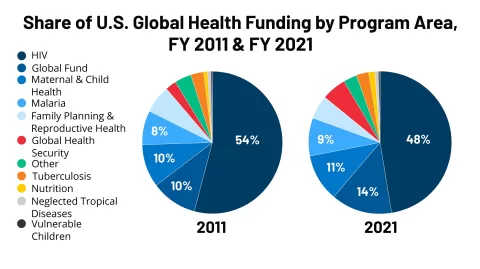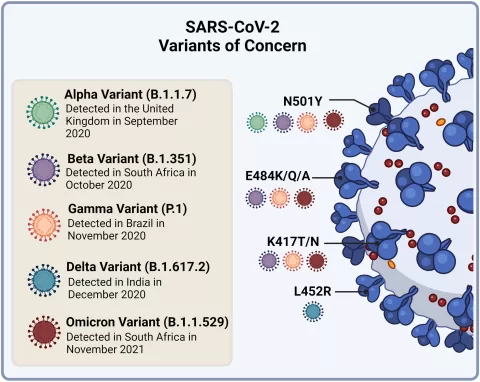The recent E coli outbreak has sent waves of concern through public health circles, particularly following the conclusion of two investigations by the CDC on December 18, 2020. Despite exhaustive analyses of the cases, the sources of these Escherichia coli outbreaks remain unidentified, highlighting the persistent challenges in tracing foodborne illnesses. Among the affected, one outbreak linked to romaine lettuce led to a significant recall, underscoring the dangers present in our food supply. The CDC’s ongoing investigation into a third outbreak, which has seen no new cases since late November, adds another layer of urgency to this foodborne disease news. As health authorities diligently work to shield the public from these potentially deadly bacteria, the ongoing vigilance in monitoring E coli outbreaks is critical.
The alarming trend of Escherichia coli incidents, commonly referred to as E coli outbreaks, highlights an urgent public health issue that draws attention from both local and national health agencies. This growing concern is crucial in the realm of food safety, as the Centers for Disease Control and Prevention (CDC) continues to investigate related foodborne pathogens that seem to evade definitive source identification. Efforts to curb these health challenges involve analyzing the spread of bacteria in various environments and updating the public on the latest findings and food recalls. In the broader context of foodborne disease news, it is essential to stay informed on evolving outbreaks and effective safety measures. Furthermore, other viral outbreaks, such as H3N2 influenza and avian influenza updates, remind us of the complexity and interconnectedness of public health threats.
E. Coli Outbreak Investigations: Recent Findings
The ongoing investigations into the recent Escherichia coli outbreaks have drawn significant attention due to their public health impact. The CDC reported two concluded investigations with sources remaining unidentified, which raises alarm about food safety. In one such outbreak involving E. coli O157:H7, officials noted a total of 32 reported cases, spanning 12 states, highlighting the widespread nature of this foodborne pathogen. Despite the uncertainty regarding the specific food source, a recall was initiated for packaged romaine lettuce from Tanimura & Antle, underscoring precautions taken by companies when a potential link is suspected.
The cases of the E. coli outbreak are alarming not only because of the number of infections, but also due to the severe health consequences observed. With 15 individuals hospitalized and one death, including cases of hemolytic uremic syndrome complicating the illnesses, the potential lethality of E. coli strains is evident. The CDC has been actively monitoring these cases, along with continuing investigations into a third outbreak, which has yet to reveal any additional cases after Nov 23. Staying ahead of E. coli outbreaks requires vigilance from both health agencies and the public, particularly regarding food safety practices.
Foodborne Disease News: Safety and Prevention
Foodborne diseases continue to be a pressing concern for public health. Each year, millions of Americans are impacted by various pathogens, including E. coli, which poses risks through contaminated food sources. The importance of food safety education and timely recalls cannot be overstated, as outbreaks can lead to serious health repercussions. Recent food recalls, such as the romaine lettuce linked to a known E. coli strain, demonstrate the need for authorities like the CDC to remain vigilant in monitoring and responding to these outbreaks.
Moreover, food safety measures at home are crucial in preventing the spread of foodborne illnesses. Individuals should be educated on properly cooking, storing, and handling food to reduce the risk of E. coli infections and other foodborne pathogens. The partnership between health officials, food manufacturers, and consumers plays a vital role in maintaining food safety and protecting public health. Keeping informed about foodborne disease news is essential for individuals to safeguard themselves and their families.
CDC E. Coli Investigation Updates: Current Status
The CDC’s recent updates on E. coli investigations shed light on the agency’s ongoing efforts to trace and prevent foodborne outbreaks. As of mid-December 2020, the investigative status included two concluded outbreaks with undefined sources and a continuous effort to investigate a third outbreak. With the recency of lab tests indicating antibiotic resistance among affected populations, the CDC underscores the critical nature of monitoring antibiotic resistance in E. coli strains, which is vital for effective treatment options.
Furthermore, the role of state health departments in collaboration with the CDC is integral to trace and control E. coli outbreaks. The data collected from various states indicates how the outbreaks are dispersed geographically and demographically, allowing better-targeted public health initiatives. As the third investigation continues, it emphasizes the need for ongoing research and preparedness for potential future outbreaks linked to E. coli and other foodborne pathogens.
Avian Influenza Updates: Global Responses
Influenza variants such as H5N6 pose growing threats to public health, indicated by recent reports from China detailing new infections. The resurgence of avian influenza highlights the need for heightened surveillance and response strategies globally. These infections, especially in humans, raise concerns regarding the transmission risks and the potential need for vaccination strategies to curb future outbreaks.
In addition to the health risks posed by avian influenza, the economic impact on poultry industries due to strict biosecurity measures cannot be underestimated. Countries must balance public health recommendations with economic stability in the agriculture sector. Ongoing discussions among global health organizations stress the importance of preparedness against avian influenza outbreaks, advising readiness through international cooperation and knowledge sharing.
Swine Influenza and Its Variants: Case Studies
The emergence of swine influenza variants, such as the recent H1N2 case in Brazil, underscores the ongoing risk these viruses pose to public health. Children, particularly, are vulnerable, necessitating close monitoring by health authorities. As swine continue to be in close contact with human populations, maintaining robust surveillance and vaccination strategies will be paramount to preventing further infections.
Moreover, the relationship between swine influenza and human health emphasizes the need for interdisciplinary approaches combining veterinary and human health surveillance. Coordinated efforts from health ministries and agricultural departments are essential to mitigate the risk of interspecies transmission, illustrating the interconnectedness of health disciplines as seen during the pandemic.
Combating Sexually Transmitted Infections: Strategic Initiatives
Recent reports from the Department of Health and Human Services (HHS) highlight a roadmap dedicated to combating the rise of sexually transmitted infections (STIs) in the United States. The strategic plan addresses critical areas such as increasing awareness, improving access to healthcare services, and advancing research efforts to stem the increasing rates of STIs. This cooperative strategy aims not only to reduce infection rates but also to ensure equitable health outcomes across different demographics.
Moreover, the roadmap emphasizes the importance of education and community outreach, particularly among high-risk populations. Encouraging safe practices and regular screenings is paramount in reversing the concerning trends observed in STI rates. The HHS initiative reflects a comprehensive response to a public health crisis that requires attention and mobilization of resources at both the local and national levels.
Influence of COVID-19 on Public Health Trends
The COVID-19 pandemic has significantly shifted public health trends and priorities, as recent studies reveal demographic disparities in excess deaths. Research demonstrates that marginalized communities and low-wage essential workers have been disproportionately affected, leading to increased calls for systemic change to protect these vulnerable populations. Understanding these dynamics is crucial for building resilience against future outbreaks.
Additionally, the pandemic has underscored the interrelation of various health threats, including the resurgence of influenza cases and other infectious diseases. As public health agencies adapt their responses to the evolving situation, lessons learned from COVID-19 will be vital in formulating strategies to combat not only influenza but also other communicable diseases that may arise.
The Importance of Public Health Communication
Effective public health communication plays a critical role in managing disease outbreaks, including foodborne illnesses like E. coli. Clear, timely, and transparent information from health authorities fosters trust and encourages compliance among the public during outbreaks. By disseminating information about risks, symptoms, and prevention strategies, officials can empower individuals to take proactive measures in safeguarding their health.
Moreover, leveraging social media and digital platforms can enhance the reach of health messages, particularly among younger audiences. As misinformation can easily spread, establishing reliable channels for disseminating accurate public health information is essential. The intersection of technology and public health communication will be pivotal in addressing current and future health challenges effectively.
Recommendations for Health Practices During Outbreaks
During times of outbreak, whether related to E. coli or viral infections like H3N2, public health recommendations are crucial for minimizing risk. Common practices include emphasizing hand hygiene, safe food preparation, and staying informed about local health advisories. Adhering to these recommendations can significantly decrease transmission rates and protect vulnerable populations.
Furthermore, health agencies often recommend vaccination where applicable, such as for influenza viruses, to bolster community immunity. Similar strategies may apply during foodborne disease outbreaks, where educating the public on safe food handling and preparation can prevent illness. Building a culture of health literacy will empower individuals to contribute to community health security, especially in the wake of an outbreak.
Frequently Asked Questions
What are the latest updates on E coli outbreaks investigated by the CDC?
The CDC recently concluded investigations into two separate E coli outbreaks involving the strain O157:H7, which resulted in illnesses across 12 states, including a food recall for a specific brand of romaine lettuce. Although the source of the outbreaks remains elusive, affected individuals exhibited symptoms between June and October 2020.
How can I stay informed about foodborne diseases like E coli outbreaks?
To stay informed about foodborne diseases such as E coli outbreaks, regularly check the CDC’s website and follow foodborne disease news updates. These resources provide crucial information regarding ongoing investigations, recalls, and safety tips to prevent infections.
What should I do if I suspect I have an E coli infection from a recent outbreak?
If you suspect you have an E coli infection from a recent outbreak, contact your healthcare provider immediately. Look for symptoms such as severe stomach cramps, diarrhea, and vomiting. Early medical intervention is vital, especially for severe cases that could lead to complications like hemolytic uremic syndrome.
What caused the recent E coli outbreak linked to romaine lettuce?
The E coli outbreak linked to romaine lettuce was associated with the brand Tanimura & Antle, which recalled its packaged product after laboratory tests identified the outbreak strain. Despite the recall, the exact source of the E coli contamination remains unknown.
What are the typical symptoms of an E coli infection?
Typical symptoms of an E coli infection include severe stomach cramps, diarrhea (often bloody), vomiting, and sometimes fever. Symptoms usually appear within 3 to 4 days after exposure to the bacteria. If you experience these symptoms, seek medical attention.
How are E coli outbreaks tracked and investigated by health authorities?
E coli outbreaks are tracked and investigated by health authorities, such as the CDC, through reporting from healthcare providers and state health departments. They analyze laboratory test results, identify clusters of illnesses, and trace back the sources of infections to prevent further cases.
What preventive measures can be taken to avoid E coli and other foodborne diseases?
To prevent E coli and other foodborne diseases, practice proper food handling hygiene: wash hands before and after handling food, cook meat thoroughly, avoid cross-contamination, and wash fresh produce under running water. Stay updated on food recalls and outbreaks through health agency alerts.
Are E coli outbreaks related to the consumption of any specific foods?
Yes, E coli outbreaks are often linked to the consumption of undercooked meat, unpasteurized dairy products, raw vegetables (especially leafy greens), and contaminated water. Awareness of these risks can help consumers make safer food choices.
What is the significance of antibiotic resistance in E coli strains from recent outbreaks?
The discovery of antibiotic resistance in E coli strains from recent outbreaks is significant because it indicates challenges in treating severe infections. Although the CDC states this doesn’t affect treatment options, monitoring antibiotic resistance is crucial for effective public health responses.
How does the CDC identify and respond to new E coli outbreaks?
The CDC identifies and responds to new E coli outbreaks through surveillance, laboratory analysis of clinical specimens, and epidemiological investigations. When patterns of infection emerge, they quickly work to trace the source, provide safety recommendations, and implement necessary public health measures.
| Key Point | Details |
|---|---|
| E coli Outbreak Investigations | CDC concluded investigations into two E coli O157:H7 outbreaks without identifying sources. A third outbreak investigation continues. |
| First Outbreak Details | 32 cases reported from Jun 6 to Oct 25, 15 hospitalizations, and 1 death. Affected states include California, Ohio, and Illinois. |
| Food Recall | Tanimura & Antle recalled romaine lettuce after identifying the outbreak strain in tests. |
| Laboratory Findings | Samples from affected individuals showed antibiotic resistance, but treatment options remain unaffected. |
| Continuation of Ongoing Investigation | No new reported cases in the ongoing E coli outbreak investigation since Nov 23. |
Summary
The recent investigations into the E coli outbreak demonstrate the challenges health authorities face in tracing the origins of infections. Despite the conclusion of two distinct outbreaks, the sources remain elusive, highlighting the ongoing concern of foodborne diseases such as E coli. With recalls implemented and continued monitoring, it is crucial for consumers to stay informed and for health agencies to enhance their surveillance efforts to prevent future outbreaks.
The content provided on this blog (e.g., symptom descriptions, health tips, or general advice) is for informational purposes only and is not a substitute for professional medical advice, diagnosis, or treatment. Always seek the guidance of your physician or other qualified healthcare provider with any questions you may have regarding a medical condition. Never disregard professional medical advice or delay seeking it because of something you have read on this website. If you believe you may have a medical emergency, call your doctor or emergency services immediately. Reliance on any information provided by this blog is solely at your own risk.







